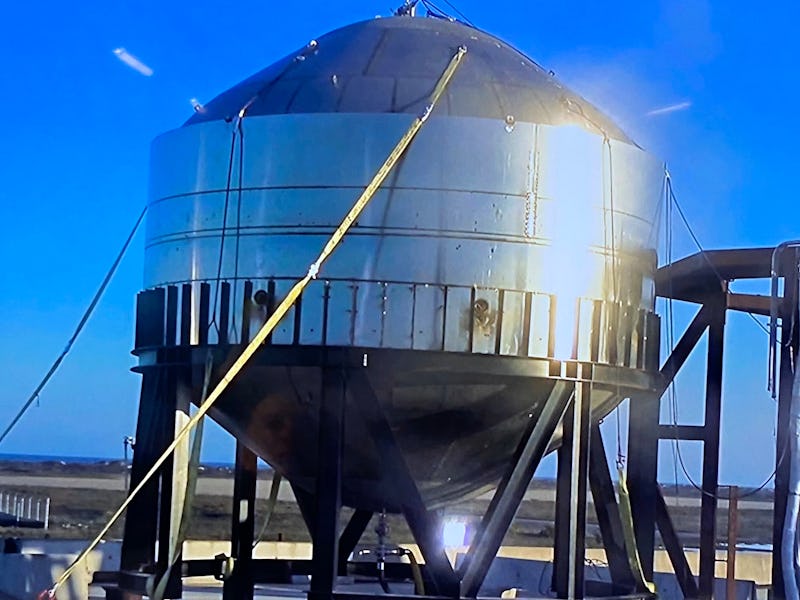SpaceX Starship: Elon Musk explains why it needs to beat water towers
The under-development spaceship looks like it should be serving water, but it's set to work a lot smarter.

You could be forgiven for thinking SpaceX's Starship prototype looks a bit like a water tower. But Elon Musk explained Friday how, despite suggestions the company aims to use off-the-shelf tank components, the ship will improve on these towers in a number of ways.
The conversation was sparked by a Teslarati report Thursday, citing a SpaceX engineer, which claimed the company is aiming to use commercially-available manufacturing equipment to build Starship bodies in a matter of days. However, Musk was quick to respond over Twitter that suggestions the company wants to use off-the-shelf water tower manufacturing technology "isn't quite correct."
SpaceX's goal is to rapidly build Starships to fuel some of its more ambitious missions, meaning speed is vital. During a September 2019 event where Musk unveiled the first full-size Starship prototype, he explained that development would pick up speed to the point where "a whole stack of [Starships]" would build up fast. The rocket is fully reusable, can transport up to 100 people or 100 tons at once, and is designed to cover all of SpaceX's missions from satellite launches to building a city on Mars.
But while speed is of the essence, SpaceX will need to focus on precision. Musk explained Friday that SpaceX's orbital rockets will require a level of precision around three to four times greater than a water tower, which means "super precise parts, fixtures & welding." For suborbital launches, the team can afford to be a bit less precise.
"That said, although substantial capital & engineering is required to achieve extreme precision, marginal production cost of the primary structure should actually be less than a water tower, because it’s built inside a factory in volume," Musk wrote.
The first full-size Starship prototype.
The Starship's unique stainless steel design has attracted a number of comparisons. Musk originally described the design as taking inspiration from The Adventures of Tintin. Water tower comparisons are a regular occurrence, particularly for the shortened designs used for testing. When the short "Starhopper" completed a 150-meter test jump in August 2019, Musk compared it to R2D2's dad.
The unique design enables a number of benefits. Musk explained in January 2019 that it allows for transpiration cooling, where the material almost sweats to keep temperatures down. Another reason why SpaceX switched away from carbon fiber is cost, as stainless steel costs $2,500 per ton versus $130,000 per ton for carbon fiber.
Musk explained Friday, in response to a question about whether SpaceX would use water tower machines to make its rockets, that unmodified machines don't work great due to lack of efficiency. The Starhopper, he explained, used 12.5 millimeter thick steel. The SN1 prototype uses four millimeter thick steel. For optimized versions, they could go as low as two millimeters in areas with a circular steel design that measures 9,000 millimeters in diameter.
SpaceX has previously detailed plans to boost its manufacturing efficiency with ideas like taking steel directly from the mill and curving it to the right shape, instead of using individual components. With a previously-stated goal of sending up the first mission in 2021, a telecommunications satellite for a client, SpaceX will need to balance both speed and efficiency as it builds up its planned stack of Starships.